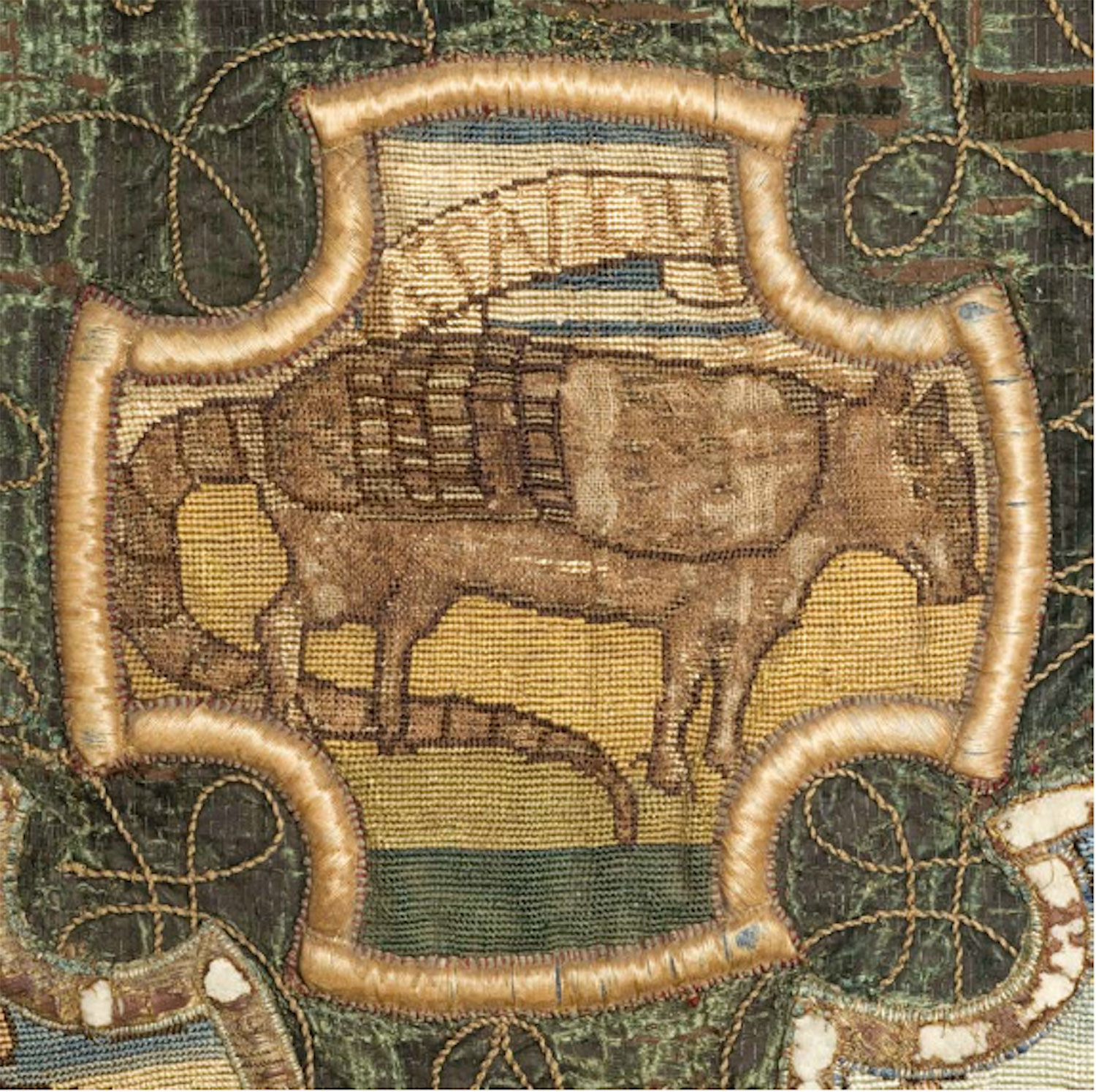The creature represented on this piece of silk embroidery by Mary Queen of Scots and labelled ‘A TATOU’ is a South American armadillo. The piece is one of 22 like it mounted on the Cavendish Hanging now kept at Oxburgh Hall in Norfolk, England. Mary’s source in the case of the armadillo had nothing to do with the Americas: French naturalist Pierre Belon. It was in the Turkish market in Constantinople that Belon saw an armadillo. He published several works on his travels and on natural history in the 1550s. In one of these, Belon calls the armadillo ‘a little creature from Brazil, which is a kind of hedgehog,’ apparently mistaking the bristles on its shell for spikes. The woodcut illustration contained in the final chapter of his account of his voyage to the Levant is, in fact, Mary’s armadillo.
Mary’s Armadillo
Detail of the Cavendish Hanging embroidered by Mary, Queen of Scots (Oxburgh Hall, Norfolk; on loan from the Victoria and Albert Museum, inv. T.30-1955; public domain).
Peter Mason
Further reading
- Bath, M. (2008) Emblems for a Queen: The Needlework of Mary Queen of Scots (London: Archetype Publications).
- Cei, G. (1992) Viaggio e relazione delle Indie (1539–1553), edited by F. Surdich (Rome: Bulzoni Editore).
- Goodrich, T.D. (1990) The Ottoman Turks and the New World: A Study of Tarih-i Hindi-i Garbi and Sixteenth-Century Ottoman Americana (Wiesbaden: Otto Harrassowitz).
- Levey, S.M. (2007) The Embroideries at Hardwick Hall: A Catalogue (National Trust).
- Mason, P. (2009) Before Disenchantment: Images of Exotic Animals and Plants in the Early Modern World (London: Reaktion Books).
- Mason, P. (2015) ‘André Thevet, Pierre Belon and Americana in the embroideries of Mary Queen of Scots’, Journal of the Warburg and Courtauld Institutes, vol. 78, 207–21.
- Merle, A. (ed.) (2001) Voyage au Levant (1553): les observations de Pierre Belon du Mans (Paris: Chandeigne).





